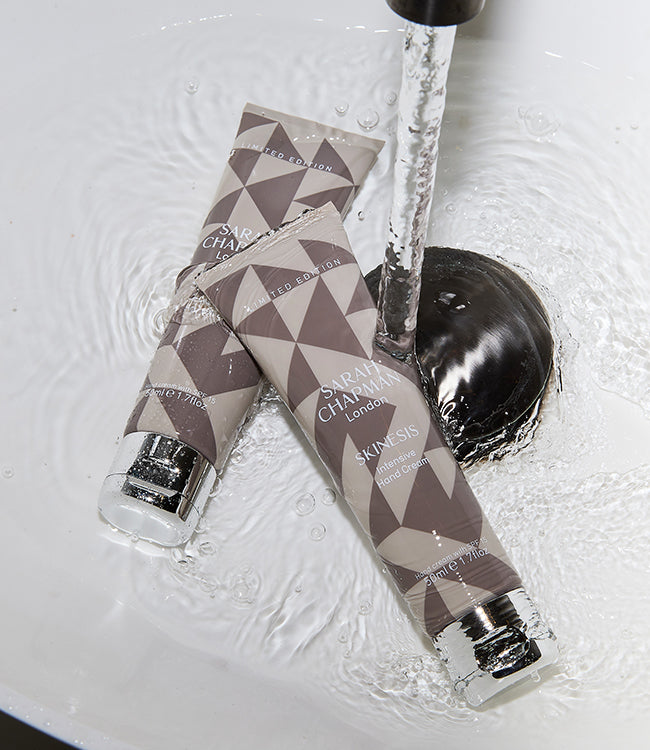What is a skin cell?

Know the cell and its structure
The top layer of our skin, the epidermis, consists of layers that comprise four types of skin cells: keratinocytes, melanocytes, Merkel cells, and Langerhans cells
Each one of these four types of skin cells are crucial to the role of the skin in providing protection, the transmission of sensation and regulation of temperature. Beneath the epidermis are the dermal cells, found in the underlying connective tissue.
Of these four cell types found in the epidermis the predominant (accounting for around 90 per cent) is the keratinocyte, whose function is to form and sustain a barrier against environmental damage – whether from environmental factors such as UV radiation and heat or from bacteria and viruses, and to protect against water loss.
Keratinocytes are epithelial cells, the most frequently found type of skin cell throughout the human body.
Understanding the skin cell is key to understanding our skin itself, and how we can optimise its care and its appearance.
Skin is, of course, a continuously self-renewing tissue. Every organ of our body – including the skin, our body’s biggest organ (8 pounds (3.6 kilograms) and 22 square feet (2 square meters) – consists of cells, and all of our body’s cells comprise DNA: the cellular self-renewal necessary for life is achieved by each cell copying itself, constantly.
The skin cell itself has been the keystone of one of the most important and interesting discoveries in genetics in recent years, centred on the role of the telomere in ageing. What is a telomere? Inside the cell our genes are arranged along chromosomes, twisted, double-stranded molecules of DNA. At the ends of the chromosomes are “caps” - stretches of DNA called telomeres. These protect the data within the genes and, crucially, hold data about how we age. Every time a cell copies itself, the telomere – a region of repetitive nucleotide sequence at each end of a chromosome, which protects the end of the chromosome from deteriorating - gets shorter but the DNA itself remains
Over time, the telomeres become too short and therefore less efficient in function, hence the frequent description of telomeres as the ‘ageing clock’ of the cell. Ageing is due to cell senescence, caused by telomere shortening: telomeres shorten after each round of DNA replication, then cells enter a senescence state.
One of our most effective ingredients, RenovageTM, works by lengthening telomeres during cell division. We use RenovageTM in several of our products: Eye Recovery, Overnight Facial, Dynamic Defence Concentrate SPF15, Overnight Hand and Nail Treatment, Overnight Body Treatment, Age Repair Concentrate.
Known as the “youth precursor”, RenovageTM helps prolong cell lifespan by up to 30 per cent and improves overall skin condition and appearance: reducing UV sunspots, minimising dilated pores, increasing firmness and moisture levels by lengthening the telomeres during cell division. RenovageTM helps attack oxidative stress and the result for skin is that it looks visibly younger with improved barrier function, smaller pore size, reduction of UV damage and less redness.
The importance of telomeres
Just over ten years ago it was established by geneticist Richard Cawthon and his colleagues at the University of Utah that longer telomeres in humans are statistically associated with longer life expectancies.
The full implications are for our health – for our lifespan, or for ageing – are still being explored. But in the laboratory researchers have so far been able to successfully use telomerase to keep human cells dividing far beyond their normal limit, and without the cells becoming cancerous.
Telomere shortening can be prevented by the use of telomerase, an enzyme which is coded into nearly every genome but which is suppressed most of the time. It is therefore telomerase which acts in opposition to telomere shortening: in young cells, telomerase prevents telomeres from deteriorating but as cells divide more and more, the telomerase starts to become insufficient and thus the telomeres grow shorter and the cells age. The cell can no longer divide, and hence this shortening process is associated with ageing.
It is not yet known whether shorter telomeres are simply a sign of ageing or whether it actually contributes to ageing – and while telomere shortening is not the only important role in ageing, it undoubtedly plays a major role. While we know that telomeres are shortened as we age, they can also be shortened by other factors including stress, smoking, obesity, lack of exercise and a poor diet (for instance, research has found that a diet rich in antioxidants, specifically omega-3 fatty acids, reduces telomere shortening).
If telomeres are indeed an “ageing clock” then telomeres, and telomerase, look likely to become the intense focus of even further medical research - to exciting effect for dermatological development in the near future.
References and sources
Shammas MA. Telomeres, lifestyle, cancer, and aging. Current Opinion in Clinical Nutrition and Metabolic Care. 2011;14(1):28-34. doi:10.1097/MCO.0b013e32834121b1.
Mitteldorf JJ. How does the body know how old it is? Introducing the epigenetic clock hypothesis. Biochemistry (Moscow). 2013;78(9):1048-1053.
Callaway E. Telomerase reverses aging process. Nature: doi:10.1038/news.2010.635 (2010)
Aubert G1, Lansdorp PM. Telomeres and aging. Physiology Review. 2008 Apr;88(2):557-79. doi: 10.1152/physrev.00026.2007
Hornsby PJ. Telomerase and the aging process. Experimental Gerontology. 2007;42(7):575-581. doi:10.1016/j.exger.2007.03.007.
Buckingham EM, Klingelhutz AJ. The role of telomeres in the aging of human skin. Exp Dermatol. 2011 Apr;20(4):297-302. doi: 10.1111/j.1600-0625.2010.01242.x




